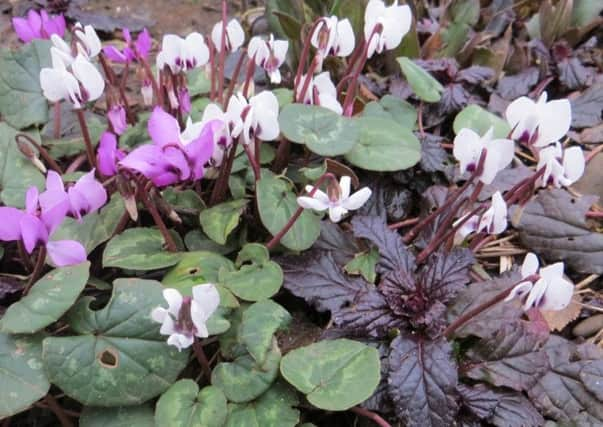Good cheer as new growth starts to stir


Last month, which seemed to fly by, offered so many opportunities to get on with outdoor jobs, and that’s always a great help. There’s nothing worse than starting a new growing season with a backlog of good intentions.
The feel-good factor continued when an obstinate New Zealand flax, previously mentioned as being difficult to dig out, finally yielded to spade and navvy’s pick. Now cyclamen hederifolium has more space, but this phormium cookianum (sub-species hookeri) Tricolor deserve recognition for the green, yellow and red margined leaves alone.
Advertisement
Hide AdAdvertisement
Hide AdThe old plant’s gone, but not forgotten because I salvaged some offshoots. They’ll make fine container plants.
There’s a way to go before we can claim to be out of the woods weather-wise, but there are enough encouraging signs to make whatever comes bearable. Daylight hours are increasing, garden birds are starting to sing and reliable, hardy, ornamental plants are delivering the colour we expect. So far so good, but if a plant is charmed into early flowering by mild midwinter weather, just enjoy the moment.
Rosemary Jessops Upright is as hardy as they come and generally blooms around May and June. However, a specimen in this garden that enjoys a sheltered west-facing spot started showing its blue flowers in January. Just one of many out of season occurrences that make gardening so interesting.
The garden is alive with bulbs shooting skyward, and the flowering of winter aconites, cyclamen coum and snowdrops is just beginning. Deciduous shrubs salix, ribes and spiraea are also starting to stir.
Advertisement
Hide AdAdvertisement
Hide AdIt will only take the warmth of an indoor windowsill to encouraging flowering in a vase, and that’s exactly what I did last week.
The first bunches of daffodils on sale were spotted by the lady of the house, and our annual, early season pick-me-up sprang into action. At £1 for 14 stems, all in bud, the purchase represented 10-plus days of visual pleasure.
After trimming 1cm from the base of each stalk to expose fresh conductive cells, they went into a vase of water with a few sprigs of spiraea arguta, whose growth buds are just about to open. This enhances the display. Forsythia, willow and ribes are alternatives.
Change the water and daffodils when they begin to fade, replacing them with a fresh bunch, but keep the shrubs going and note after a month or so that roots begin to appear. Unwittingly, you’ve propagated stem cuttings that can be planted in the garden or offered to friends.